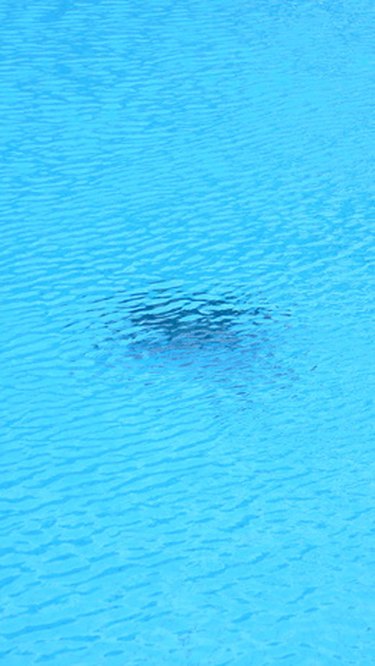
Chlorine is a standard component to any swimming pool maintenance program. This disinfecting agent sanitizes the water by killing contaminants such as human impurities, bacteria, viruses and algae. Sometimes, the chlorine dissipates, meaning there is a noticeable drop in chlorination levels. Several factors can cause this.
Understanding Dissipation
Video of the Day
Chlorine levels in swimming pools need to be tested regularly by placing water drops into test tubes. Kits are available for these tests at pool supply dealers, or water samples may be taken directly to those same retailers for inspection. These tests will indicate the amount of free available chlorine (FAC), which is the chlorine in the pool that is still on hand and ready to kill bacteria. Tests also will show the combined available chlorine (CAC) that already has been used up fighting contaminants. The sum of FAC and CAC is the total chlorine level. When readings become low, the pool owner needs to determine the source of this dissipation.
Video of the Day
Weather
Ultraviolet (UV) rays increase the rate that chlorine is consumed in the water. Therefore, chlorine dissipates more quickly on hot, sunny days. Pool care specialists recommend that chlorine be added to pool water in the evenings to safeguard against dissipation.
Heavy Use
Pool water is contaminated when swimmers leave behind human secretions and excretions such as perspiration, urine and diarrhea. A high volume of pool visitors will cause chlorine levels to drop, as the chlorination unleashes its powerful cleansing properties.
Chlorine Lock
Products containing cyanuric acid are routinely added to pool water to prevent chlorine from being dissipated from sunlight. Known as conditioners or stabilizers, cyanuric acid mixtures can become too high and thereby weaken the chlorine's strength. This is known as chlorine lock. A pool owner's warning sign of too much cyanuric acid is a minimal reading of chlorine--sometimes as low as zero--even though he has been adding the chlorine products for several days. The pool water might appear cloudy. Test strips will confirm excessive amounts of the cyanuric acid. Treatment of chlorine lock requires the pool to be partially drained and then refilled with fresh water.
Shock Treatment
Additional doses of chlorine may be warranted, especially when pool water has a strong odor of chlorine. Mixing a heavier quantity of chlorine than usual is known as "shock treatment" and can be necessary when chlorine dissipation is suspected. "Shock" is a quick way of ensuring that the appropriate amounts of chemicals are in place to attack any pollutants so that swimmers don't become ill.